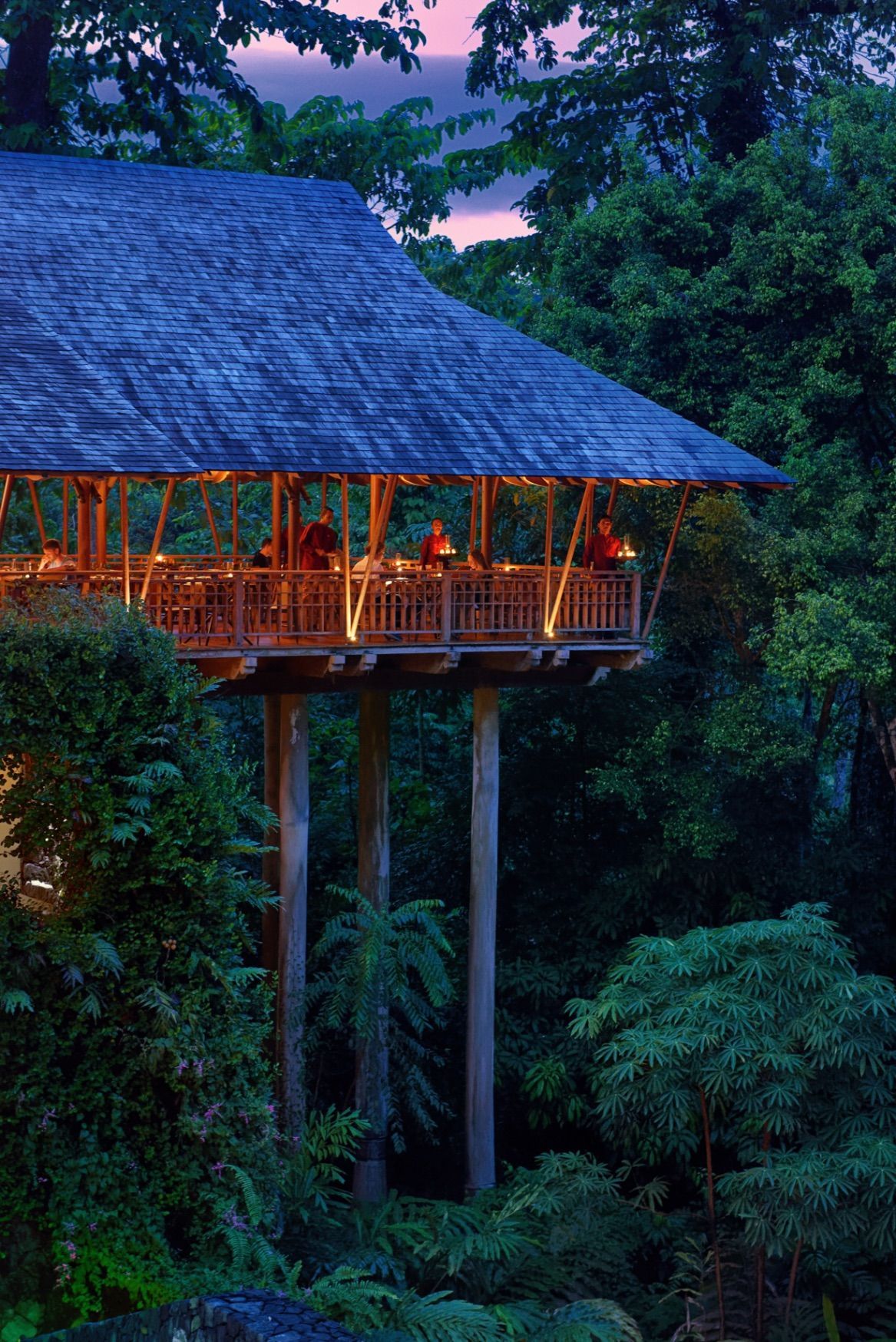
The end of the year is hardly the time of sunshine and blue skies to spend a few days in a tropical paradise. After all, the monsoon rains make it nearly impossible to frolic around the beach, much less head out for an afternoon of watersports.
Yet The Datai Langkawi, a sprawling 500 hectare property in the northern Malaysian island of Langkawi in the state of Kedah will have you thinking twice about what paradise truly means. Indeed, thinking of beachfront escapes conjures notions of bronzing on the sundeck, as you sip on the fresh nectar of a voluptuous green coconut.

But at The Datai, it also means being able to disappear into the warm bosom of a cosily lit wooden cabin set in a 10 million year old rainforest. It means you get to listen to the symphony of the rainforest — a melodic chorus of birds, chirping cicadas, and the odd mating call of the critters that call it home. Most importantly, it means you get to disconnect from the world to connect with the earth — from listening to the soft pitter patter of raindrops on the roof to getting a massage next to a babbling brook.
There is more to paradise than the beach, and The Datai Langkawi is a stellar example.
Room options at The Datai
For starters, guests need not worry about getting drenched while staying in one of the 121 rooms, villas and suites. This is thanks to the property’s armada of electric buggies that will zip you around its vast grounds — though going on foot is the best way to take in the magnificent beauty that’s around you.
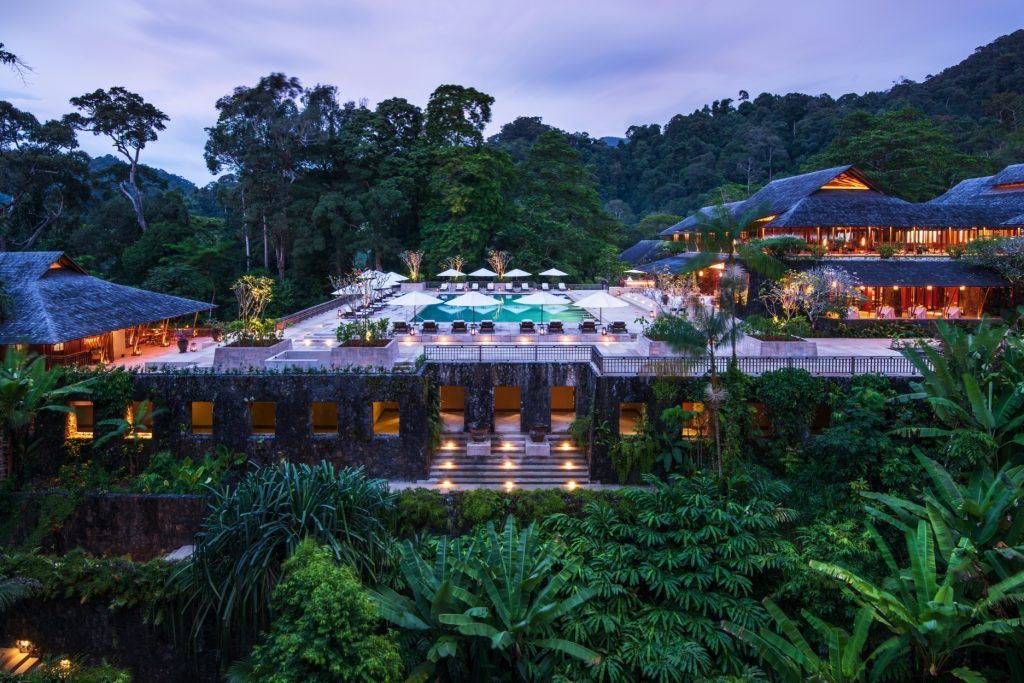
The accommodation options at The Datai Langkawi is divided into three collections: The Canopy Collection, the Rainforest Collection, and The Beach Collection. The Canopy Collection starts from the Deluxe Room, going up to The Datai Suite and is housed in a multi-storey building. The Rainforest Collection comprises standalone villas nestled in the jungles while the Beach Collection is a string of villas, each with its own pool, that gets you as close to the beach as possible.
We stayed at the Rainforest Villa, a 123 square-metre standalone raised on stilts, that’s in actuality, large enough to be the size of an entire city apartment. A handsome king-sized bed dressed in Egyptian cotton backed by a window sits on one side while a bookshelf stocked with relevant reads on local traditions, architecture, and culture sits on the other.
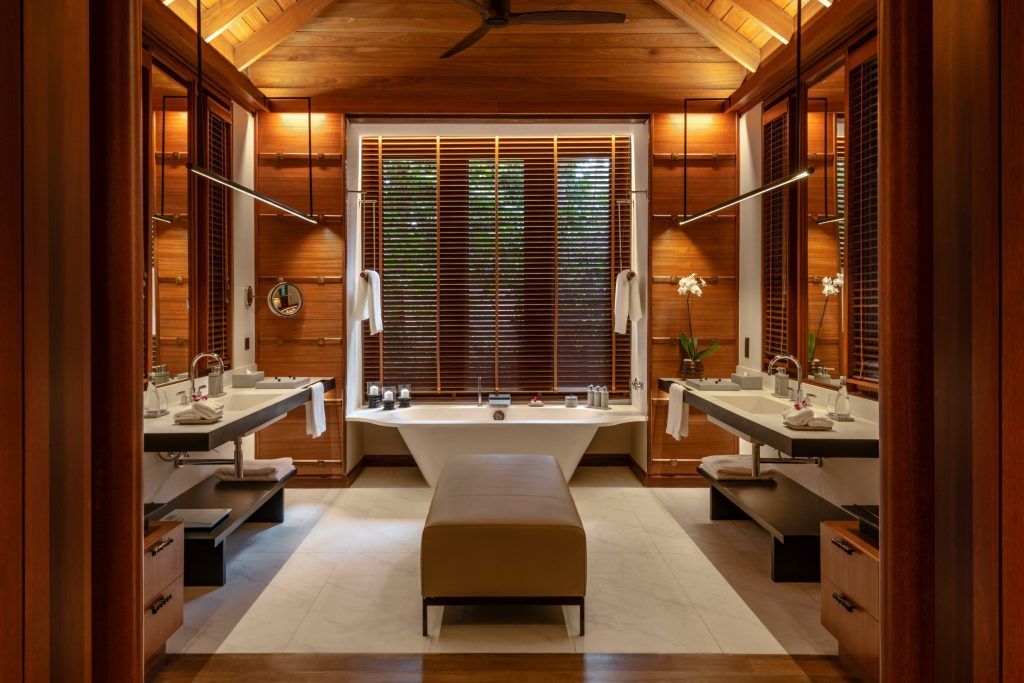
Those on a work-travel arrangement (or secretly abroad while working remotely — we don’t judge) will be glad to know that there are two desks from which you and/or your companion can work in peace.
The bathroom is massive and well-appointed with separate areas for the toilet and standing shower. A large tub equipped with candles is situated at one end, just next to the blinds with a view of the outdoors.
Feeling like you need some fresh air? There’s an outdoor balcony that’s perfect to savour a coffee by way of the luxurious Cafe Richard capsules included in the room.
A serious dining destination
Regardless of your room choice, there is always one thing about a stay here to look forward to: breakfast. Sure, having a set of abs would be nice to flaunt at the beach, but for the rest of us, lifting plates of food is as important as lifting plates at the gym.
Every morning, the staff would bustle about The Dining Room to prepare a breakfast as lavish as a king’s banquet. For not only is there the standard egg station, there is also an a la minute station complete with a chef whipping up a rotation of Malaysian favourites like roti canai and roti jala.

The true gourmands amongst you will delight in rarer dishes like the nasi ulam, which was available on that one fateful Friday morning. Otherwise, take comfort in the viennoiseries and modest selection of cakes. The croissants and pain au chocolats — when savoured fresh — are as good, or even better than many Paris boulangeries, and the pandan cake is simply unforgettable.
Pro-tip: Don’t dismiss the eggless kaya spread; it’s better than many versions we’ve tried and tastes phenomenal when lathered on a croissant.
As we discovered, gastronomy is taken extremely seriously at The Datai. So serious in fact, that the property plays host to some of Malaysia’s most important dining events, the most recent of which is the launch of the Kita Food Festival. Perhaps it is the staggering beauty of the property, or its commitment to food culture as a whole, but The Datai has the pulling power to draw some of Malaysia’s and the region’s best chefs.
When we visited, Chef Darren Teoh from Dewakan — Malaysia’s sole representative on Asia’s 50 Best Restaurants list was whipping up a culinary storm with Prateek Sadhu, the chef who propelled Masque in Mumbai into global consciousness. The duo join hands with The Datai’s senior chef de cuisine Chai Chun Boon for a six hands dinner with a thoughtful menu that showcased a curation of their best dishes, as well as a range of workshops and one off dinners.
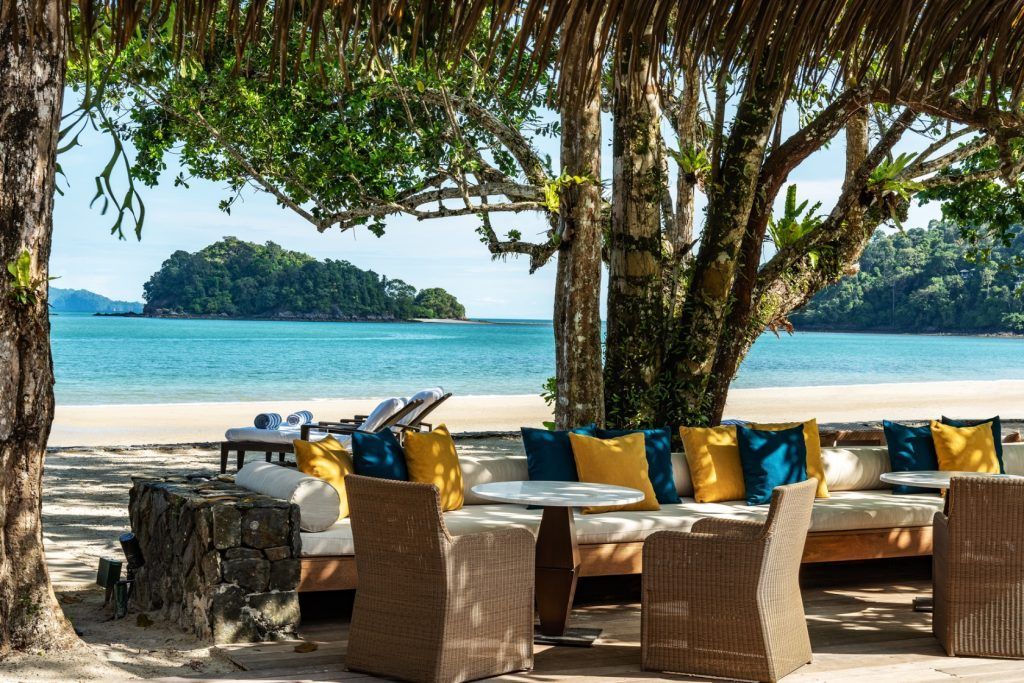
Come lunchtime, head to the Beach Club and Bar to dine with a view of the Andaman Sea. The menu here is extensive, with plenty of healthy options. The seafood is extremely fresh, which is extremely evident when we ordered the sashimi. Sure these are not Japanese nor even cold climate fish — which means they’re leaner than the varieties found in upscale sushi restaurants. Yet having tropical fish in this raw manner, with a dollop of freshly grated wasabi on the side is the surest way to taste the purity of Langkawi’s marine produce.
By night, guests can choose between two traditional restaurants: Thai, by way of The Pavillion, or Malay at The Gulai House.
It might seem odd to dine in a Thai restaurant while in Malaysia but Langkawi sits at the water’s edge of The Malay Peninsula and borders its Thai neighbours. In fact, if one were to gaze across the rippling sea from The Beach Club, the Thai island of Ko Tarutao is purely visible — its sandy beaches are a mere 10 km north of Langkawi.
Dining at The Pavilion then is as authentically Thai as one can get while remaining physically in Malaysia. It sits in the middle of the rainforest canopy, and a set of 30-metre high muscular wooden beams cradles the 40-seater restaurant.

Food-wise, Chef Somkeat Lok oversees the kitchens and the menu does not dumb down the rich cultural narrative of Southern Thailand despite being a globally renowned resort. All menu names are in Thai with English descriptors and there are dishes that few would’ve heard of beyond the bounds of the Thai Kingdom. These are the ones that guests would be most rewarded with, so skip the typical dishes like the omelette.
Instead, order the gaeng neua poo bai cha plu, the best dish we had that night. It’s a modest-looking bowl holding fresh crab meat poached until the flesh still trembles on the spoon, served in a yellow coconut curry with betel leaf. The crab’s sweet succulence is accentuated only by the luscious gravy of the turmeric and coconut milk.
The dishes here can be really spicy so if you’re with guests who may not be entirely used to the canon power of chillies, be sure to ask for it to be tamed.
The gym, the pool and the spa
The quality of the food and restaurants at The Datai is only matched by the facilities. The gym, located next to The Beach Club faces the sea and is well-equipped for your strength and cardio needs. Like most hotels, there is no squat rack but the range of dumbbells will be good enough for serious lifters to find substitutions.
There are also two swimming pools on the property, one of which is adults-only so guests can take a peaceful dip or swim some laps without being harassed by shrieking children.

Otherwise, take refuge in the spa, which is purposefully built next to a small winding stream. Every treatment is a multisensory experience beyond just the spa music and scent of essential oils – you could hear the meditative sounds of the water as it gushes past the rocks and the verdant scent of the rainforest.
Here, the signature treatments are rooted in Ramuan, the traditional Malay wellness practice that incorporates healing botanicals grown in the rainforest. This is after all, a fertile land and one of the most biodiverse places on the planet that’s home to over 15,000 species of flowering plants alone.
What to do at The Datai
What makes The Datai Langkawi truly remarkable as a property though is not just the restaurants and facilities but also its cornucopia of experiences. There’s a little bit of something for all ages and all manner of interests ranging from an hour to two hours. We’d recommend downloading the app which gives full descriptions of each activity as well as its prices, though many are complimentary.
Nature enthusiasts will be in for a treat. There are daily complimentary experiences that lets guests get up close with the flora and fauna of Langkawi. The Rainforest After Dark is one such, and guests will be equipped with torchlights and UV lights for a guided tour conducted by the property’s naturalists who wouldn’t pass up any chance at educating the group on the critters that call the rainforest home.
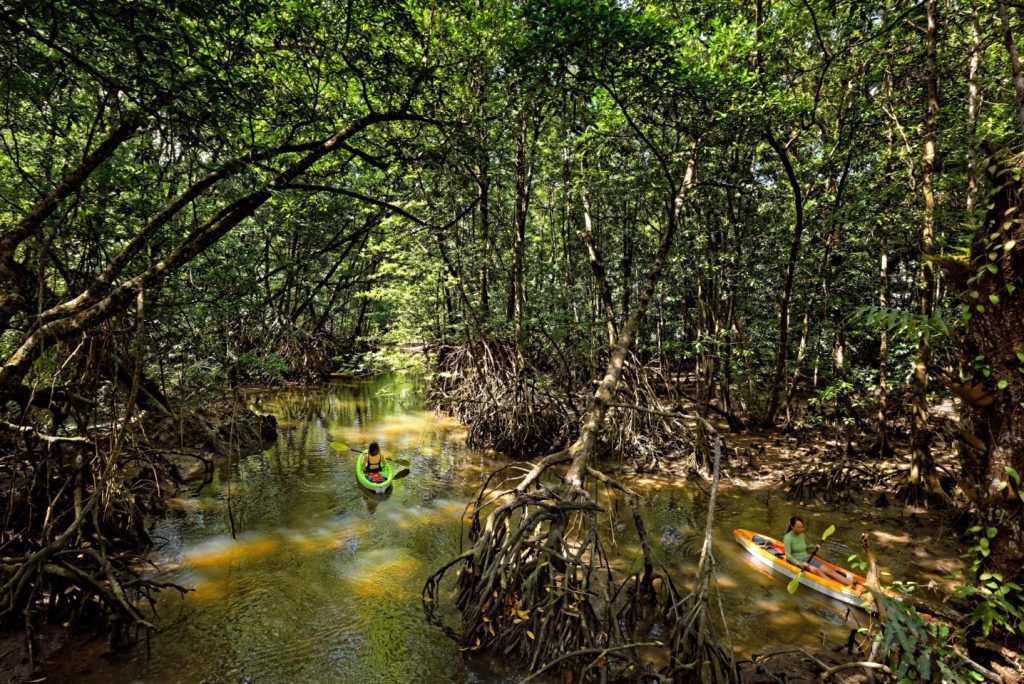
Other experiences worth the time includes the Mysterious Mangrove where guests will kayak out from the beach and into the mangrove to spot anything from tree snakes to otters.
Raining when you’re there? Fear not for there are cooking classes as well as upcycling workshops. The former starts by plucking your own herbs from the garden followed by a session with the chefs who will teach you the secrets of a signature dish while the latter will see guests making candles from leftover pieces of wax as well as soaps.
How sustainable is The Datai Langkawi?
It’s hard to stay in a magnificent property like this without wondering if the hotel itself is respectful of its natural surroundings. For instance, given that the Rainforest Villa is located in the jungle, how much destruction was wrecked by industrial machinery and how much of the woodland was sacrificed in the name of luxury?
The answer is: very little. When it was first constructed in the early 90s, (The Datai Langkawi was opened in 1993), trained elephants felled the trees and the resulting timbre was reused in construction. Naturally, this meant that the property was built using wood – red balau, yellow balau and belian – were sourced as locally as possible. Where a clearing had to be made, new native trees were planted.
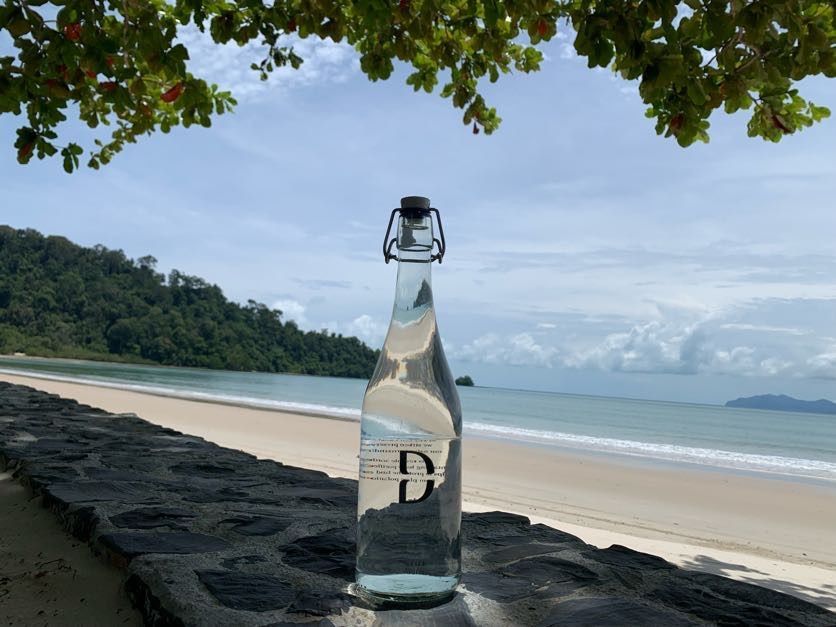
Nearly three decades on, this ethos still carries on strong. For example, we made a phone call to the concierge requesting for a plastic bag to put our wet swimwear to pack in our luggage. The response was all one could hope for: “I’m sorry but we don’t have any plastic at all onsite. But we can send some paper bags – would that work?”
This is of course, on top of industry best practices – like issuing reusable glass bottles of water instead of single use plastic ones and only washing towels and bed linen when the guests request.
This is part of The Datai Pledge, a program launched in 2019 to be, “an active instigator for sustainable change and regenerative travel”. Indeed, throughout our stay, the staff would point out initiatives, like creating hornbill nesting boxes (these majestic birds quire large natural cavities in trees to build their nests) and keeping close tabs the area’s carbon emission by collaborating with a local university to conduct studies on the tree inventory, health and carbon stock estimation.
The Verdict

In an age where we are all overwhelmed with an endless cacophony of notifications from multiple apps, Datai Langkawi offers peace and serenity, not just in its suite of offerings but in what it stands for.
It’s peace of mind from within, and without.
The hotel spares every effort, weaving a magical touch from the second you step foot on the property to the moment you check out and sit in the car to be whisked to the airport. This, you will be reminded of when the driver puts on the departure playlist. As the speakers play Yuna’s Langit, outside, we can’t help but notice the outstretched limbs of the rainforest trees sway in the gentle breeze as though saying goodbye.
Book your stay with Booking.com
The post Check in: The Datai Langkawi will let you disconnect from the world to connect with the earth appeared first on Lifestyle Asia Hong Kong.
